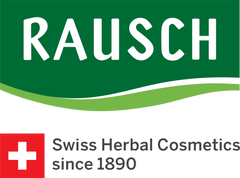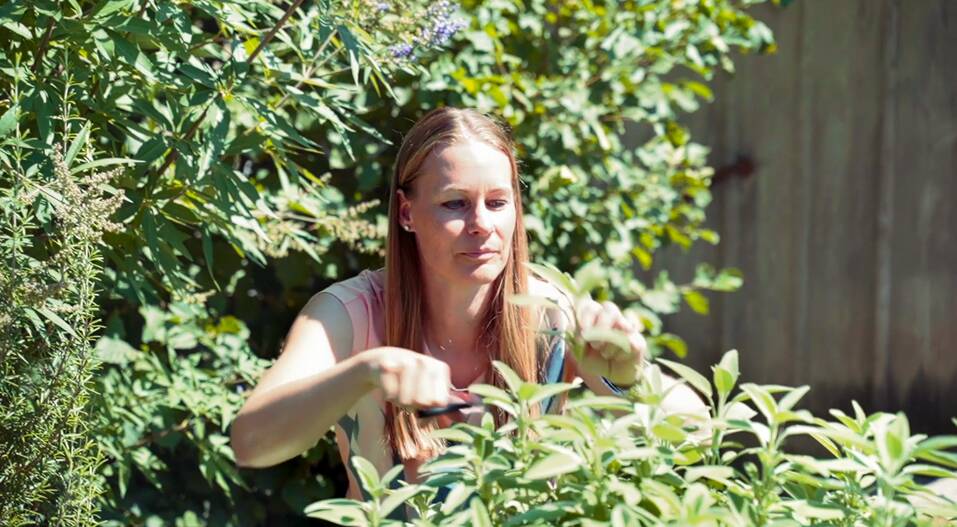Access Denied
IMPORTANT! If you’re a store owner, please make sure you have Customer accounts enabled in your Store Admin, as you have customer based locks set up with EasyLockdown app. Enable Customer Accounts
Kräuterwelt
Ob aus Blüten, Blättern, Rinden, Wurzeln oder ganzen Pflanzen: Mit grosser Erfahrung gewinnen wir aus Kräutern ihre wertvollen Naturwirkstoffe, um diesen Schatz für Dich und Deine Schönheit nutzbar zu machen – von A wie Aloe vera bis Z wie Zinnkraut. So garantieren wir eine nachhaltige Wirkung unserer Produkte.
Was ist ... ?

Aloe vera
Reich an Aminosäuren, Vitaminen sowie Mineralstoffen und Mucopolysacchariden. Aloe vera spendet Feuchtigkeit, kräftigt und pflegt die Kopfhaut. Schützt das Haar vor dem Austrocknen.

Amaranth
Hat seinen Ursprung in Mexiko, Zentral- und Südamerika. Das Öl wird aus den Samen gewonnen, die 5–8 % Öl enthalten. Squalen, Vitamin E und Linolsäure wirken schützend und antioxidativ.

Andiroba
Wächst im brasilianischen Amazonasgebiet. Das Öl des Andirobabaums ist besonders reich an Fettsäuren und Bitterstoffen, wirkt entzündungshemmend und wehrt Parasiten ab.

Argan
Der Arganbaum wird auch «Baum des Lebens» genannt. Die mandelförmigen Nüsse enthalten ca. 50 % Öl mit 80 % reinen ungesättigten Fettsäuren, vor allem Omega-6 und Vitamin E. Das Öl gibt dem Haar Elastizität und schützt es vor Hitze.

Aronia
Die Aroniabeere, auch Schwarze Apfelbeere genannt, hat dank dem hohen Gehalt an Polyphenolen und Vitamin C eine sehr gute antioxidative Wirkung.

Birke
Die Blätter und der Saft der Birke wirken leicht antiseptisch und unterstützen die Funktionen der Kopfhaut. Die Blätter enthalten wertvolle Inhaltsstoffe wie Flavonoide, reichlich Vitamin C, Saponine und ätherische Öle.

Brennnessel
Besitzt eine Vielzahl an Inhaltsstoffen, unter anderem Vitamine, Gerbstoffe, Mineralsalze und wertvolle Aminosäuren. Fördert wirkungsvoll die Kopfhautfunktionen und unterstützt den Haarnachwuchs.

Drachenfrucht
Stammt ursprünglich aus Mexiko, wird heute in tropischen Regionen kultiviert. Die Blüten der Drachenfrucht gehören zu den grössten der Welt und blühen nur eine Nacht während der Regenzeit. Sie enthält über 90 % Wasser, wirkt feuchtigkeitsspendend, belebend und antioxidativ.

Eichenrinde
Eichenrinde wird als Arzneimittel gerne bei entzündlichen Hauterkrankungen angewendet. Die enthaltenen Tannine wirken adstringierend (zusammenziehend), juckreizstillend und antiseptisch.

Eigelb
Enthält wertvolle Proteine, Vitamine sowie natürliches Lecithin. Das Haar gewinnt an Geschmeidigkeit, Spannkraft und Glanz.

Gerstengras
Enthält eine einzigartige Kombination von Nährstoffen und Mineralstoffen, Vitaminen, sekundären Pflanzenstoffen sowie Antioxidantien. Diese ungewöhnlich hohe Nährstoffdichte wirkt sich positiv auf die Haarstruktur aus.

Ginseng
Die Ginsengwurzel gilt als Sinnbild für Gesundheit und langes Leben und ist Träger der Lebensenergie Chi. Der Ginseng-Extrakt wirkt tonisierend und stärkt das Haar.

Guarana
Die Früchte der Guarana-Pflanze enthalten im Inneren Samen mit einer besonders hohen Konzentration an Coffein. Der Guarana-Extrakt wirkt tonisierend, adstringierend (zusammenziehend) und entspannt die Gefässe. Enthält Coffein, Saponine und Tannine.

Hafer
Reich an Stärke, Proteinen, Mineralsalzen (Phosphor, Magnesium, Eisen, Zink, Calcium), Spurenelementen und Vitamin B und E. Der Extrakt wirkt juckreizstillend, mildert Rötungen und beruhigt.

Hauswurz
Reich an beruhigenden und entzündungshemmenden Schleimstoffen. Ihre Extrakte schützen das Haar wirkungsvoll und wirken wohltuend auf die Funktionen der Kopfhaut.

Herzsamen
Enthält wertvolle Inhaltsstoffe wie Saponine (Triterpenglycoside), Phytosterole, Flavonoide und Halicarsäure, die als natürliches Cortison bezeichnet werden können (Phyto-Cortison).

Hirse
Enthält einen hohen Anteil an Proteinen, Mineralstoffen, Vitaminen und Spurenelementen sowie die für die Gesundheit von Haut und Haaren wichtige Kieselsäure (Silicium). Sie stärkt das Haar und sorgt für dessen natürliche Spannkraft.

Huflattich
Enthält milde Schleimstoffe und Schwefel, die eine leicht antiseptische, reizmildernde und entzündungshemmende Wirkung besitzen und die Regulierung der Kopfhautfunktionen unterstützen.

Jungapfel
Antioxidatives Powerpaket mit viel Vitamin C und einem hohen Gehalt an Eisen, Kalium und sekundären Pflanzenstoffen. Enthält alle Inhaltsstoffe eines ausgereiften Apfels – nur in hochkonzentrierter Form. Diese Kombination wirkt sich positiv auf die Widerstandskraft von Haut und Haar aus.

Kamille
Wirkt beruhigend, entzündungshemmend und antibakteriell. Kamillenblüten enthalten antiseptische Wirkstoffe, die für eine sanfte, ausgleichende Pflege der Kopfhaut sorgen und so Rötungen mildern und Irritationen vorbeugen.

Klette
Enthält wertvolle, leicht antiseptisch wirkende Inhaltsstoffe, Schleimstoffe und ätherische Öle. Die bakteriostatischen und fungiziden Eigenschaften der Klettenwurzel eignen sich besonders zur nachhaltigen Behandlung von schuppiger Kopfhaut.

Kokosnuss
Kokosöl enthält einen hohen Anteil an Phytosterolen, Triterpenen und Tocopherolen. Dadurch spendet das Öl Feuchtigkeit und hinterlässt einen angenehmen Kühleffekt auf der Haut.

Lavendel
Hat eine entzündungshemmende und leicht antibakterielle Wirkung. Hilft, den Juckreiz zu stillen und beruhigt die Kopfhaut.

Lindenblüte
Reich an milden Schleimstoffen und Flavonoiden. Wirkt mildernd und beruhigend. Lindenblüten verströmen einen süsslichen Duft und sind in Europa und Nordamerika meist in Alleen, Grünanlagen und Laubwäldern anzutreffen.

Macadamia
Die aus Australien stammende «Königin der Nüsse» zählt zu den teuersten Nüssen. Sie hat einen hohen Gehalt an Eiweiss und essenziellen Fettsäuren und ist reich an den Vitaminen B, C und E.

Malve
Ist bekannt für ihren hohen Gehalt an wertvollen, filmbildenden Schleimstoffen. Dadurch wirkt sie reizmildernd und hauterweichend. Sie schützt feines und empfindliches Haar.

Mandel
Dank seiner Milde und seinen rückfettenden Eigenschaften wird Mandelöl seit jeher zur Herstellung exquisiter Hautpflegeprodukte verwendet und geschätzt.

Meerestang
Reich an Mineralsalzen, Schleimstoffen, Jod und Polyphenolen. Wirkt stimulierend und regulierend auf die Talgdrüsen sowie auf den Stoffwechsel der Kopfhaut.

Melisse
Reich an ätherischen Ölen wie Citral und Citronellal. Wirkt beruhigend und mild auf die schuppige und gerötete Kopfhaut.

Minze
Die geschätzte Tee- und Heilpflanze mit dem kräftig-frischen Duft liefert aus ihren Blättern ein mentholreiches ätherisches Öl, das bei äusserlicher Anwendung angenehm kühlend ist und eine erfrischende Wirkung besitzt.

Panamarinde
Die intensiv schäumende, natürliche Substanz sorgt in Kombination mit anderen wertvollen Wirkstoffen für die besonders milde und schonende Reinigung von Kopfhaut und Haar.

Passionsblume
Stammt aus Afrika, Südamerika und Madagaskar und enthält einen hohen Anteil an Linolsäuren und bis zu 70 % Omega-6-Fettsäuren. Nährt und sorgt für ein seidiges Hautgefühl.

Quinoa
Reich an allen neun Aminosäuren, Vitamin E und B. Hilft, die Haarstruktur zu stärken und das Haar zu kräftigen. Die Aminosäurenverbindungen reparieren geschädigte Stellen von innen nach aussen.

Ringelblume
Hat entzündungshemmende, wundheilungsfördernde und leicht antibakterielle Eigenschaften. Beruhigt die Haut und wirkt regulierend auf ihren Feuchtigkeitsgehalt.

Rosenwurz
Wächst bevorzugt in den Gebirgsregionen von Europa bis Asien. Reich an Flavonoiden und Phenolsäure, welche die Kopfhaut beruhigen und den Haarboden mit einem aktiven, natürlichen Anti-Aging-Effekt stärken.

Rosmarin
Der im Mittelmeerraum beheimatete Rosmarin ist reich an ätherischen Ölen. Bei äusserlicher Anwendung regt er den Kreislauf und die Hautdurchblutung an und wirkt keimhemmend.

Salbei
Enthält wertvolles ätherisches Öl, Gerbstoffe und Flavonoide. Wirkt entzündungs- und schweisshemmend sowie entspannend. Desinfiziert und desodoriert die Kopfhaut und verleiht dem Haar einen langanhaltend frischen Duft.

Sanddorn
Enthält hochwertige Aktivstoffe, die die Schuppenschicht glätten und dem Haar neuen, natürlichen Glanz verleihen. Zusätzlich wird das Haar vor Witterungseinflüssen geschützt.

Shea Butter
Shea Butter wird aus der Frucht (Nuss) des Karitébaums hergestellt. Die einzigartige Kombination der Fettsäuren regeneriert und pflegt die Haut intensiv und stärkt die Hautbarriere.

Sonnenblume
Reich an Polyphenolen und Photorezeptoren. Funktioniert als natürlicher Lichtschutz. Spendet Feuchtigkeit und macht das Haar geschmeidig.

Spitzwegerich
Enthält äusserst milde Schleimstoffe, Kieselsäure, Gerbstoffe, Flavonoide und Mineralstoffe mit einem hohen Zink- und Kaliumanteil. Hat eine entzündungshemmende, lindernde und stärkende Wirkung auf die Kopfhaut.

Tabak
Tabak ist überwiegend in Südamerika heimisch, z. T. auch in Australien und Nordamerika. Zu seinen wichtigsten Bestandteilen zählen u.a. Cellulose und Proteine, Naturharz, Äpfelsäure, Zitronensäure und die anorganischen Inhaltsstoffe Kalium und Calcium.

Thymian
Besitzt gut desinfizierende und juckreizstillende Eigenschaften. Diese Wirkung wird durch natürliche Gerbstoffe verstärkt und unterstützt die Behandlung von Schuppen und/oder irritierter Kopfhaut.

Tiaré
Aus den stark duftenden, schneeweissen tahitianischen Tiaré-Blüten wird mithilfe von naturreinem Kokosnussöl das kostbare Monoïöl mit seinen wertvollen Pflegeeigenschaften gewonnen.

Tigergras
In Indien gilt Tigergras, auch Wassernabelkraut genannt, seit langem als Verjüngungsmittel. Es wirkt entschlackend, entgiftend und hautreinigend.

Traube
Reich an ungesättigten Fettsäuren wie Linolsäure, welche die oberen Hautschichten regenerieren. Ein hoher Vitamin-E-Gehalt im Traubenkernöl schützt vor freien Radikalen. Phenole, Mineralstoffe, Spurenelemente, Lecithin und Vitamin K wirken entzündungshemmend, straffend und pflegend.

Schwarzer Pfeffer
Seine grössten Anbauländer sind Vietnam, Indonesien, Indien, Brasilien und Malaysia. Enthält scharf schmeckende Säureamide, vor allem Piperin, ätherisches Öl, Sabinen, Caryophyllen und Safrol.

Weidenrinde
Wirkt aufgrund seines hohen Gerbstoffanteils adstringierend (zusammenziehend) und beruhigt irritierte Kopfhaut. Mit antibakterieller und tonisierender Wirkung.

Weizen
Weizenkeim-Extrakt und Weizenkleie sind reich an Proteinen, Vitamin B und E, enthalten natürliche Lipide und mehrfach ungesättigte Fettsäuren. Sie spenden Feuchtigkeit, Geschmeidigkeit und schützen vor dem Austrocknen.

Wildrosenfrucht
Enthält einen hohen Anteil an Vitamin C und sekundären Pflanzenstoffen. Besonders das Vitamin C fördert die Durchblutung des Haarbodens und unterstützt die Stärkung und Regeneration von Kopfhaut und Haar.

Zinnkraut
Reich an naturreiner Kieselsäure. Zinnkraut glättet und regeneriert die äussere Schicht des Haarschafts. Das Haar wird widerstandsfähig, stark und gewinnt an Spannkraft und natürlichem Glanz.
Invalid password
Enter




